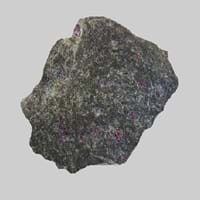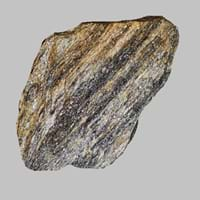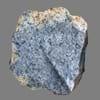Peridotite and Mylonite
Definition
Definition
Peridotite is a dense, coarse-grained plutonic is the main constituent of the earth's mantle
Mylonite is a metamorphic rock formed by ductile deformation during intense shearing encountered during folding and faulting, a process termed cataclastic or dynamic metamorphism
History
Origin
Pike County, U.S
New Zealand
Discoverer
Unknown
Unknown
Etymology
From French, from peridot + -ite
From Greek mulōn mill + -ite
Class
Igneous Rocks
Metamorphic Rocks
Sub-Class
Durable Rock, Medium Hardness Rock
Durable Rock, Medium Hardness Rock
Family
Group
Plutonic
Not Applicable
Other Categories
Coarse Grained Rock, Opaque Rock
Fine Grained Rock, Opaque Rock
Texture
Texture
Phaneritic
Foliated
Color
Dark Greenish - Grey
Black to Grey
Maintenance
Less
Less
Durability
Durable
Durable
Water Resistant
Yes
Yes
Scratch Resistant
Yes
Yes
Stain Resistant
No
No
Wind Resistant
No
No
Acid Resistant
No
No
Appearance
Rough and Shiny
Dull, Banded and Foilated
Uses
Architecture
Interior Uses
Decorative Aggregates, Interior Decoration
Decorative Aggregates, Interior Decoration
Exterior Uses
As Building Stone, As Facing Stone, Garden Decoration
As Building Stone, As Facing Stone, Paving Stone, Garden Decoration
Other Architectural Uses
Curbing
Curbing
Industry
Construction Industry
As Dimension Stone, Cobblestones
for Road Aggregate, Landscaping, Roadstone
Medical Industry
Not Yet Used
Not Yet Used
Antiquity Uses
Monuments, Sculpture, Small Figurines
Artifacts, Monuments
Other Uses
Commercial Uses
Creating Artwork, Gemstone, Jewelry, Source of Chromite, Platinum, Nickel and Garnet, Source of Diamonds
Creating Artwork, Gemstone, Jewelry
Types
Types
Dunite, Wehrlite, Harzburgite, Lherzolite and Pyrolite
Blastomylonites, Ultramylonites and Phyllonites
Features
Constitutes upper part of the Earth's mantle, Generally rough to touch, Host rock for Diamond, Is one of the oldest rock
Surfaces are often shiny
Archaeological Significance
Monuments
Used
Used
Famous Monuments
Data Not Available
Data Not Available
Sculpture
Used
Used
Famous Sculptures
Data Not Available
Data Not Available
Pictographs
Used
Used
Petroglyphs
Used
Used
Figurines
Used
Used
Fossils
Absent
Absent
Formation
Formation
Peridotites can be formed in two ways: as mantle rocks formed during the accretion and differentiation of the Earth or as cumulate rocks formed by precipitation of olivine and pyroxenes from basaltic magmas.
Mylonites are ductilely deformed rocks formed by the accumulation of large shear strain, in ductile fault zones.
Composition
Mineral Content
Amphibole, Chromite, Garnet, Magnesium, Olivine, Phlogopite, Plagioclase, Pyroxene
Porphyroblasts
Compound Content
Ca, Fe, Mg, Potassium, Silicon Dioxide, Sodium, Titanium Dioxide
Aluminium Oxide, Calcium Sulfate, Chromium(III) Oxide, Iron(III) Oxide, Magnesium Carbonate, Silicon Dioxide
Transformation
Metamorphism
Yes
No
Types of Metamorphism
Burial Metamorphism, Cataclastic Metamorphism, Contact Metamorphism, Hydrothermal Metamorphism, Impact Metamorphism, Regional Metamorphism
Not Applicable
Weathering
Yes
Yes
Types of Weathering
Biological Weathering, Chemical Weathering, Mechanical Weathering
Biological Weathering, Chemical Weathering, Mechanical Weathering
Erosion
Yes
Yes
Types of Erosion
Chemical Erosion
Chemical Erosion, Sea Erosion, Wind Erosion
Properties
Physical Properties
Hardness
5.5-6
3-4
Grain Size
Coarse Grained
Fine Grained
Fracture
Irregular
Conchoidal
Streak
White
White
Porosity
Less Porous
Highly Porous
Luster
Shiny
Shiny
Compressive Strength
107.55 N/mm2
19
1.28 N/mm2
32
Cleavage
Imperfect
Conchoidal
Toughness
2.1
Not Available
Specific Gravity
3-3.01
2.97-3.05
Transparency
Translucent to Opaque
Opaque
Density
3.1-3.4 g/cm3
2.6-4.8 g/cm3
Thermal Properties
Specific Heat Capacity
1.26 kJ/Kg K
5
1.50 kJ/Kg K
3
Resistance
Heat Resistant, Pressure Resistant, Wear Resistant
Heat Resistant, Impact Resistant, Pressure Resistant
Reserves
Deposits in Eastern Continents
Asia
China, India, Indonesia, Kazakhstan, Russia, South Korea, Thailand, Turkey
China, India, Indonesia, Saudi Arabia, South Korea
Africa
Morocco, South Africa
Eritrea, Ethiopia, Ghana, South Africa, Western Africa
Europe
Finland, France, Georgia, Germany, Great Britain, Italy, Kazakhstan, Netherlands, Norway, Spain, Switzerland, Venezuela
England, Finland, France, Germany, Great Britain, Greece, United Kingdom
Others
Not Yet Found
Not Yet Found
Deposits in Western Continents
North America
Canada, USA
USA
South America
Brazil
Not Yet Found
Deposits in Oceania Continent
Australia
New Zealand, Western Australia
Central Australia, Western Australia
All about Peridotite and Mylonite Properties
Know all about Peridotite and Mylonite properties here. All properties of rocks are important as they define the type of rock and its application. Peridotite belongs to Igneous Rocks while Mylonite belongs to Metamorphic Rocks.Texture of Peridotite is Phaneritic whereas that of Mylonite is Foliated. Peridotite appears Rough and Shiny and Mylonite appears Dull, Banded and Foilated. The luster of Peridotite and Mylonite is shiny. Peridotite is available in dark greenish - grey colors whereas Mylonite is available in black to grey colors. The commercial uses of Peridotite and Mylonite are creating artwork, gemstone, jewelry, source of chromite, platinum, nickel and garnet, source of diamonds.
|
||
|
||
|










